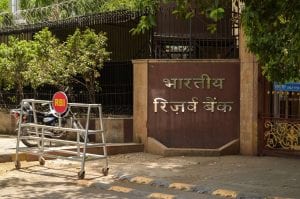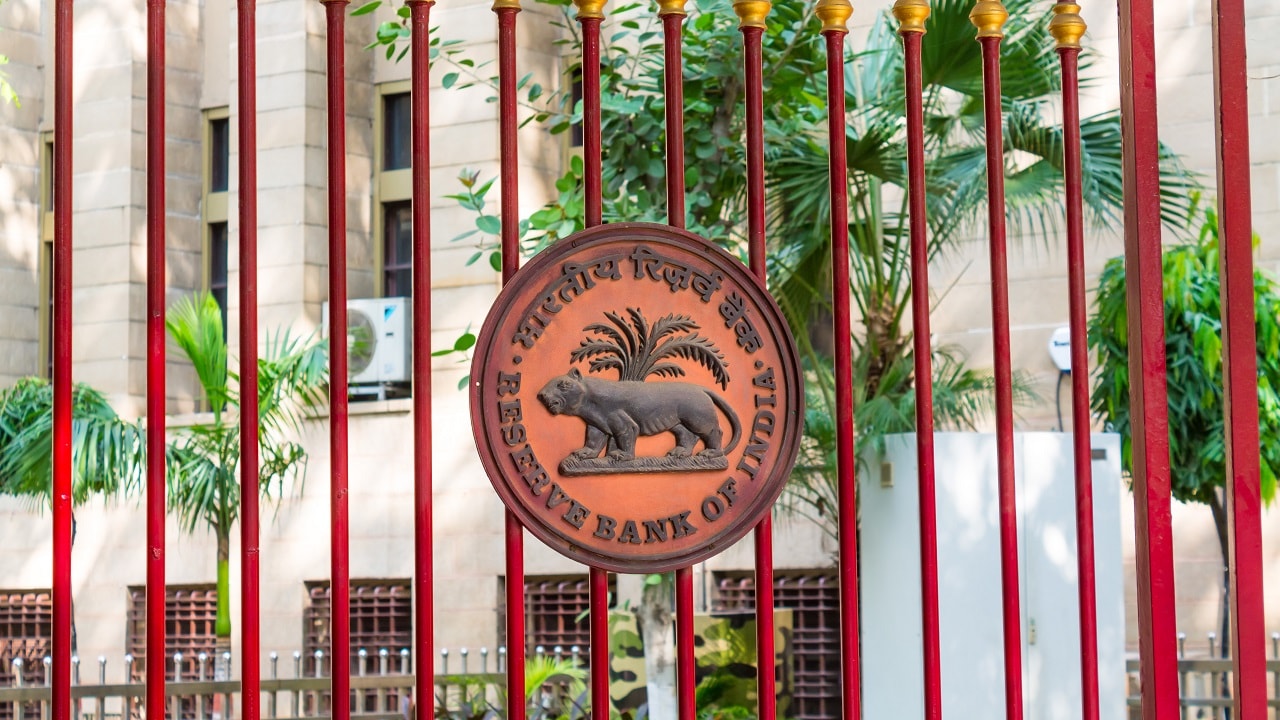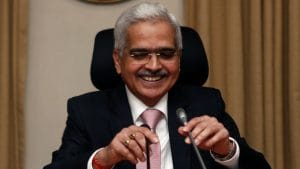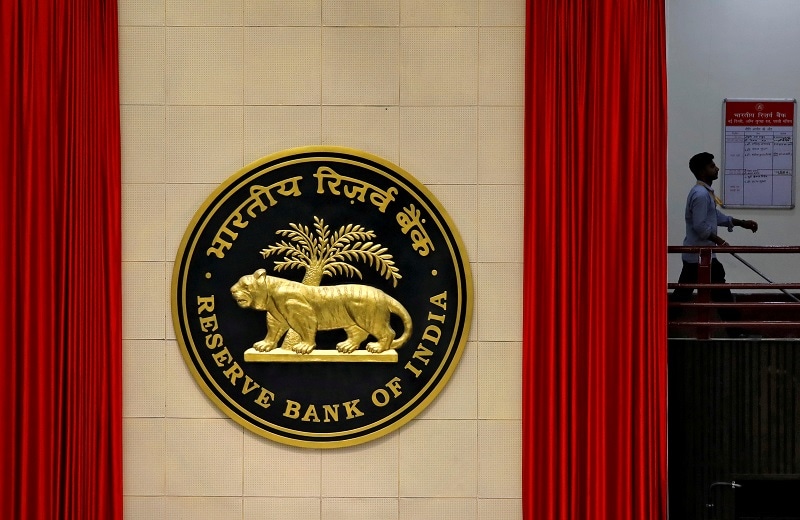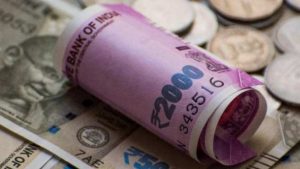RBI Policy: Here’s the full text of Governor Shaktikanta Das’ statement

KV Prasad Jun 13, 2022, 06:35 AM IST (Published)
 Listen to the Article (6 Minutes)
Listen to the Article (6 Minutes)
Summary
The Reserve Bank of India (RBI) on Friday decided to keep the benchmark interest rate unchanged at 4 percent but maintained an accommodative stance as the economy is yet to recover from the impact of the second COVID wave.
The Reserve Bank of India (RBI) on Friday decided to keep the benchmark interest rate unchanged at 4 percent but maintained an accommodative stance as the economy is yet to recover from the impact of the second COVID wave.
This is the seventh time in a row that the Monetary Policy Committee (MPC) headed by RBI Governor Shaktikanta Das has maintained the status quo. RBI had last revised its policy rate on May 22, 2020, in an off-policy cycle to perk up demand by cutting the interest rate to a historic low.
Follow our live blog here for more updates.
Here’s the full text:
The Monetary Policy Committee (MPC) met on 4th, 5th and 6th August 2021. Based on an assessment of the evolving domestic and global macroeconomic and financial conditions and the outlook, the MPC voted unanimously to keep the policy repo rate unchanged at 4 per cent. The MPC also decided on a 5 to 1 majority to continue with the accommodative stance as long as necessary to revive and sustain growth on a durable basis and continue to mitigate the impact of COVID-19 on the economy, while ensuring that inflation remains within the target, going forward. The marginal standing facility (MSF) rate and the bank rate remain unchanged at 4.25 per cent. The reverse repo rate also remains unchanged at 3.35 per cent.
2. Today, we are in a much better position than at the time of the MPC’s meeting in June 2021. As the second wave of the pandemic ebbs, containment eases and we slowly build back, vaccine manufacturing and administration are steadily rising. Yet the need of the hour is not to drop our guard and to remain vigilant against any possibility of a third wave, especially in the background of rising infections in certain parts of the country.
3. Our actions, together with those of the Government, are aimed at alleviating distress and prioritising growth, while keeping the financial system healthy and stable. Our approach can be best described by weaving together two quotes from Martin Luther King Jr1 “But I know, somehow, that only when it is dark enough can you see the stars. Keep moving. Let nothing slow you up. Move on …..”
4. Let me begin by setting out the rationale underlying the MPC’s decision. The MPC met in the shadow of the two recent inflation prints being above the upper tolerance band of the inflation target. It noted that economic activity has broadly evolved on the lines of the MPC’s expectations in June and the economy is recovering from the setback of the second wave. The monsoon has revived after a brief hiatus and kharif sowing is gaining momentum. Some high frequency indicators are also looking up again during June-July. Our expectation is that activity is likely to gather pace with progressive upscaling of vaccinations, continued large policy support, buoyant exports, better adaptations to COVID-related protocols, and benign monetary and financial conditions.
5. Consumer price inflation surprised on the upside in May, reflecting a combination of adverse supply shocks, elevated logistics costs, high global commodity prices and domestic fuel taxes. In June, headline inflation remained above the upper tolerance level, but price momentum moderated. Also, core inflation
1Source: Speeches delivered at Bishop Charles Mason Temple in Memphis, Tennessee (3 April 1968) and at Prayer Pilgrimage for Freedom (Call to Conscience, 1957) in Washington, D.C USA.
softened from its peak in May. International crude oil prices remain volatile; any moderation in prices as a consequence of the OPEC plus agreement could contribute towards alleviating inflation pressures.
6. On balance, the outlook for aggregate demand is improving, but the underlying conditions are still weak. Aggregate supply is also lagging below pre-pandemic levels. While several steps have been taken to ease supply constraints, more needs to be done to restore supply-demand balance in a number of sectors of the economy. The recent inflationary pressures are evoking concerns; but the current assessment is that these pressures are transitory and largely driven by adverse supply side factors. We are in the midst of an extraordinary situation arising from the pandemic. The conduct of monetary policy during the pandemic has been geared to maintain congenial financial conditions that nurture and rejuvenate growth. At this stage, therefore, continued policy support from all sides – fiscal, monetary and sectoral – is required to nurture the nascent and hesitant recovery. The MPC continues to be conscious of its mandate of anchoring inflation expectations as soon as the prospects for strong and sustainable growth are assured. Accordingly, the MPC decided to retain the prevailing repo rate at 4 per cent and continue with the accommodative stance with all its nuances.
Assessment of Growth and Inflation Domestic Growth
7. Domestic economic activity has started normalising with the ebbing of the second wave of the virus and the phased reopening of the economy. High-frequency indicators suggest that (i) consumption (both private and Government), (ii) investment and (iii) external demand are all on the path of regaining traction. Let me elaborate on each of these three aspects. Further easing of restrictions and increasing coverage of vaccinations are likely to boost private spending on goods and services including travel, tourism and recreational activities, propelling a broad-based recovery in aggregate demand. The robust outlook for agriculture and rural demand would continue to support private consumption. Urban demand is likely to accelerate with recovery in manufacturing and non-contact intensive services, release of pent-up demand and the pace of vaccination. This is corroborated by encouraging movements in several high frequency indicators, viz., registration of automobiles, electricity consumption, non-oil non-gold imports, consumer durable sales and hiring of urban workers. The results of the July round of the Reserve Bank’s consumer confidence survey suggest that one year ahead sentiments returned to optimistic territory from historic lows. Early results from listed firms show that corporates have been able to maintain their healthy growth in sales, wage growth and profitability, led by information technology firms. This will also support aggregate disposable income of consumers.
8. Although investment demand is still anaemic, improving capacity utilisation, rising steel consumption, higher imports of capital goods, congenial monetary and financial conditions and the economic packages announced by the Central Government are expected to kick-start a long-awaited revival. Firms polled in the Reserve Bank’s surveys expect expansion in production volumes and new orders in Q2:2021-22 which would sustain through Q4:2021-22, boding well for investment. Innovation and working models adopted during the pandemic by businesses will continue to reap efficiency and productivity gains even after the pandemic recedes. This should help trigger a virtuous cycle of investment, employment and growth.
9. External demand remained buoyant during Q1:2021-22 and was reflected in increasing exports, lending critical support to aggregate demand. Strong external demand is an opportunity for India and further policy support should help in capitalising on this. Global commodity prices and episodes of financial market volatility, together with vulnerability to new waves of infections are, however, downside risks to economic activity. Taking all these factors into consideration, projection of real GDP growth is retained at 9.5 per cent in 2021-22 consisting of 21.4 per cent in Q1; 7.3 per cent in Q2; 6.3 per cent in Q3; and 6.1 per cent in Q4 of 2021-22. Real GDP growth for Q1:2022-23 is projected at 17.2 percent.
Inflation
10. Headline CPI inflation edged up sharply to 6.3 per cent in May driven by a broad-based pick-up across all major groups on adverse supply shocks, sector- specific demand-supply mismatches and spillovers from rising global commodity prices. It remained at 6.3 per cent in June; however, core inflation registered an appreciable moderation.
11. The revival of the south-west monsoon and pick up in kharif sowing, buffered by adequate food stocks should help in containing cereal price pressures in the months ahead. High frequency food price indicators show some moderation in prices of edible oils and pulses in July on the back of supply side interventions by the government. Inflation in core services like house rentals remains below historical averages, reflecting subdued demand conditions. Crude oil prices are volatile with implications for imported cost pressures on inflation. The combination of elevated prices of industrial raw materials, high pump prices of petrol and diesel with their second-round effects, and logistics costs continue to impinge adversely on cost conditions for manufacturing and services, although weak demand conditions are tempering the pass-through to output prices and core inflation.
12. Before the onset of the pandemic, headline inflation and inflationary expectations were well anchored at 4 per cent, the gains from which need to be consolidated and preserved. Stability in inflation rate fosters credibility of the monetary policy framework and augurs well for anchoring inflation expectations. This, in turn, reduces uncertainty for investors, reduces term and risk premia, increases external competitiveness and, thus, is growth-promoting. Since the start of the pandemic, the MPC has prioritised revival of growth to mitigate the impact of the pandemic. The available data point to exogenous and largely temporary supply shocks driving the inflation process, validating the MPC’s decision to look through it. The supply-side drivers could be transitory while demand-pull pressures remain inert, given the slack in the economy. A pre-emptive monetary policy response at this stage may kill the nascent and hesitant recovery that is trying to secure a foothold in extremely difficult conditions.
13. Inflation may remain close to the upper tolerance band up to Q2:2021-22, but these pressures should ebb in Q3:2021-22 on account of kharif harvest arrivals and as supply side measures take effect. Taking into consideration all these factors, CPI inflation is now projected at 5.7 per cent during 2021-22: 5.9 per cent in Q2; 5.3 per cent in Q3; and 5.8 per cent in Q4 of 2021-22, with risks broadly balanced. CPI inflation for Q1:2022-23 is projected at 5.1 per cent.
Liquidity and Financial Market Conditions
14. During June-July, global financial markets turned volatile in response to higher inflation numbers in several countries and the fear of early policy normalisation with skewed economic recovery in some advanced countries. These developments need to be factored into our policy matrix for framing an appropriate response, given that safeguarding the economy from the vicissitudes of global spillovers and ensuring financial stability remain a top priority for the Reserve Bank. Nonetheless, domestic macroeconomic situation and the evolving growth inflation dynamics will continue to be the principal pivot of our monetary policy actions.
15. The Reserve Bank through its market operations, both conventional and unconventional, has maintained ample surplus liquidity since the onset of the pandemic to ensure easing of financial conditions in support of domestic demand. Buoyed by the renewed vigour of capital inflows and the Reserve Bank’s purchase of government securities in the secondary market, total absorption through reverse repos surged from a daily average of ₹5.7 lakh crore in June to ₹6.8 lakh crore in July 2021 and further to ₹8.5 lakh crore in August 2021 so far (up to August 4).
16. Under the revised liquidity management framework announced on February 06, 2020, the Reserve Bank has been conducting 14-day variable rate reverse repo (VRRR) auctions as its main liquidity operation. With the commencement of normal liquidity operations, the VRRR, which was temporarily held in abeyance during the pandemic, has been re-introduced since January 15, 2021 and the initial absorption of ₹2 lakh crore has been rolled over in the subsequent fortnightly auctions. In parallel, access to the fixed rate overnight reverse repo has been kept open. Markets have adapted and even welcomed the VRRR in view of the higher remuneration it offers relative to the fixed rate overnight reverse repo. Fears that the recommencement of the VRRR tantamounts to liquidity tightening have been allayed. We have seen higher appetite for VRRR in terms of the bid-cover ratio in the auctions. Considering all these aspects, it has now been decided to conduct fortnightly VRRR auctions of ₹2.5 lakh crore on August 13, 2021; ₹3.0 lakh crore on August 27, 2021; ₹3.5 lakh crore on September 9, 2021; and ₹4.0 lakh crore on September 24, 2021. These enhanced VRRR auctions should not be misread as a reversal of the accommodative policy stance, as the amount absorbed under the fixed rate reverse repo is expected to remain more than ₹4.0 lakh crore at end- September 2021. Needless to add that the amount accepted under the VRRR window forms part of system liquidity.
17. The Reserve Bank’s secondary market G-sec acquisition programme (G-SAP) has been successful in anchoring yield expectations while eliciting keen response from market participants. We propose to conduct two more auctions of ₹25,000 crore each on August 12 and August 26, 2021 under G-SAP 2.0. We will continue to undertake these auctions and other operations like open market operations (OMOs) and operation twist (OT), among others, and calibrate them in line with the evolving macroeconomic and financial conditions.
18. It is necessary to have active trading in all segments of the yield curve for its orderly evolution. Our recent G-SAP auctions that have focussed on securities across the maturity spectrum are intended to ensure that all segments of the yield curve remain liquid. Furthermore, our options are always open to include both off the run and on the run securities in the G-SAP auctions and operation twist. It is expected that the secondary market volumes would pick up and market participants take positions that lead to two-way movements in yields.
19. Our endeavour as the debt manager of both Central and state Governments has been to ensure an orderly completion of their borrowing programmes at a reasonable cost while minimising rollover risk. In my earlier statements, I have emphasised orderly evolution of the yield curve as a public good in which both market participants and the Reserve Bank have a shared responsibility. As G-sec yields serve as a benchmark and have a high signalling value for other segments of the debt market, guidance on orderly path of yields was provided through auction cut- offs, devolvements, cancellations and exercise of green shoe options in primary market operations. The introduction of uniform price auctions announced recently for issuance of securities up to 14 years tenor is expected to mitigate risks that bidders may face in the primary segment. The decision of the Government to accommodate the GST compensation payment to states for the first half of the year within the existing cash balances should assuage market concerns on the size of Government’s borrowing programme this year.
20. The efficacy of RBI’s monetary policy measures and actions is reflected in the significant improvement in transmission during the current easing cycle. The reduction in repo rate by 250 basis points since February 2019 has resulted in a cumulative decline by 217 basis points in the weighted average lending rate (WALR) on fresh rupee loans. Domestic borrowing costs have eased, including interest rates on market instruments like corporates bonds, debentures, CPs, CDs and T-bills. In the credit market, transmission to lending rates has been stronger for MSMEs, housing and large industries. The low interest rate regime has also helped the household sector reduce the burden of loan servicing. The significant reduction in interest rates on personal housing loans and loans to commercial real estate sector augurs well for the economy, as these sectors have extensive backward and forward linkages and are employment intensive.
Additional Measures
21. After the onset of the pandemic, the Reserve Bank has announced more than
100 measures to mitigate its impact. Going forward, our endeavour would be to continue the monitoring of measures which are still in operation to ensure that the benefit of all our measures percolate down to targeted stakeholders. Against this backdrop and based on our continuing assessment of the macroeconomic situation and financial market conditions, certain additional measures are being announced today. The details of these measures are set out in the statement on developmental and regulatory policies (Part-B) of the Monetary Policy Statement. Let me outline these measures.
On-tap TLTRO Scheme: Extension of Deadline
22. The scope of the on-tap TLTRO scheme, initially announced on October 9, 2020 for five sectors, was further extended to stressed sectors identified by the Kamath Committee in December 2020 and bank lending to NBFCs in February 2021. The operating period of the scheme was also extended in phases till September 30, 2021. Given the nascent and fragile economic recovery, it has now been decided to extend the on-tap TLTRO scheme further by a period of three months, i.e. till December 31, 2021.
Marginal Standing Facility (MSF): Extension in Period of Relaxation
23. On March 27, 2020, banks were allowed to avail of funds under the marginal standing facility (MSF) by dipping into the Statutory Liquidity Ratio (SLR) up to an additional one per cent of net demand and time liabilities (NDTL), i.e., cumulatively up to 3 per cent of NDTL. To provide comfort to banks on their liquidity requirements, including meeting their Liquidity Coverage Ratio (LCR) requirement, this relaxation which is currently available till September 30, 2021 is being extended for a further period of three months, i.e., up to December 31, 2021. This dispensation provides increased access to funds to the extent of ₹1.62 lakh crore and qualifies as high- quality liquid assets (HQLA) for the LCR.
LIBOR Transition-Review of Guidelines – Export Credit in Foreign Currency and Restructuring of Derivative Contracts
24. The transition away from London Interbank Offered Rate (LIBOR) is a significant event that poses certain challenges for banks and the financial system. The Reserve Bank has been engaging with banks and market bodies to proactively take steps. The Reserve Bank has also issued advisories to ensure a smooth transition for regulated entities and financial markets. In this context, it has been decided to amend the guidelines related to (i) export credit in foreign currency and (ii) restructuring of derivative contracts. Banks will be permitted to extend export credit in foreign currency using any other widely accepted Alternative Reference Rate in the currency concerned. Since the change in reference rate from LIBOR is a “force majeure” event, banks are also being advised that change in reference rate from LIBOR/ LIBOR related benchmarks to an Alternative Reference Rate will not be treated as restructuring.
Deferral of Deadline for Achievement of Financial Parameters under Resolution Framework 1.0
25. The resolution plans implemented under the Resolution Framework for COVID- 19 related stress announced on August 6, 2020 require sector specific thresholds to be met in respect of certain financial parameters. Of these parameters, the thresholds in respect of four parameters relate to operational performance of the borrowing entities, viz. Total Debt to EBIDTA ratio, Current Ratio, Debt Service Coverage Ratio and Average Debt Service Coverage Ratio. These ratios are required to be met by March 31, 2022. Recognizing the adverse impact of the second wave of COVID-19 and the resultant difficulties on revival of businesses and in meeting the operational parameters, it has been decided to defer the target date for meeting the specified thresholds in respect of the above four parameters to October 1, 2022.
Concluding Remarks
26. As the COVID-19 second wave ebbs, there is optimism that with adequate pandemic protocols and ramp-up in the vaccination rate, we should be able to tide over a third wave, if it occurs. As a nation, we should continue to be vigilant and ready to proactively deal with any resurgence of the pandemic with more rapidly transmissible mutants of the virus, should it happen.
27. The recovery remains uneven across sectors and needs to be supported by all policy makers. The Reserve Bank remains in “whatever it takes” mode, with a readiness to deploy all its policy levers – monetary, prudential or regulatory. In
parallel, our focus on preservation of financial stability continues. At this juncture, our overarching priority is that growth impulses are nurtured to ensure a durable recovery along a sustainable growth path with stability. In this endeavour, we have consciously chosen optimism over gloom, inspired by Mahatma Gandhi: “I am an irrepressible optimist, but I always base my optimism on solid facts”2.
Thank you. Stay safe. Stay well. Namaskar.

Elon Musk forms several ‘X Holdings’ companies to fund potential Twitter buyout
3 Mins Read
Thursday’s filing dispelled some doubts, though Musk still has work to do. He and his advisers will spend the coming days vetting potential investors for the equity portion of his offer, according to people familiar with the matter

KV Prasad Journo follow politics, process in Parliament and US Congress. Former Congressional APSA-Fulbright Fellow



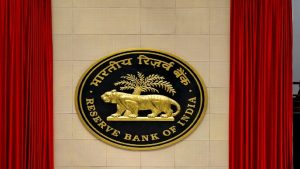






 Listen to the Article
Listen to the Article  Daily Newsletter
Daily Newsletter





